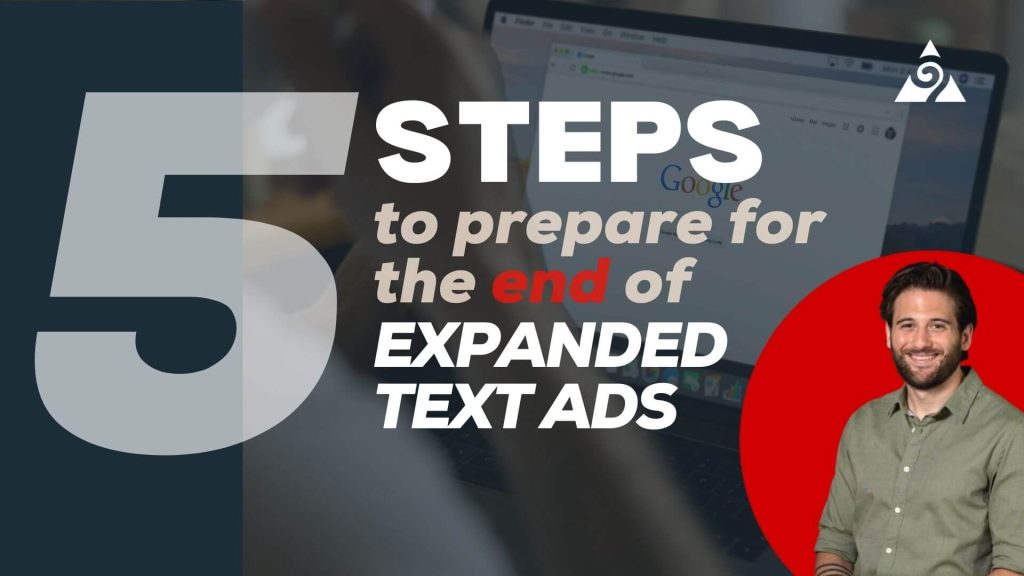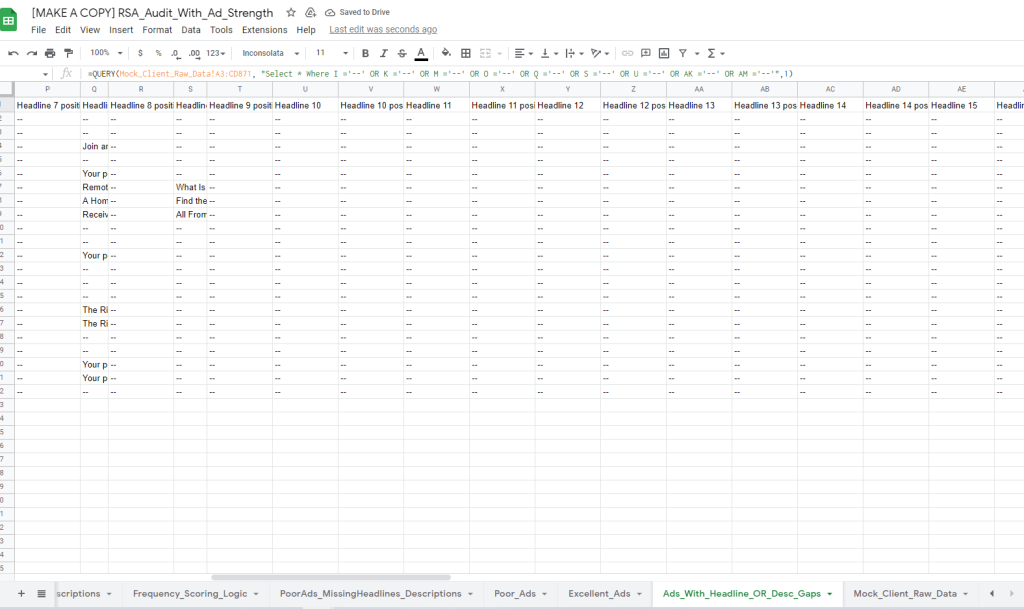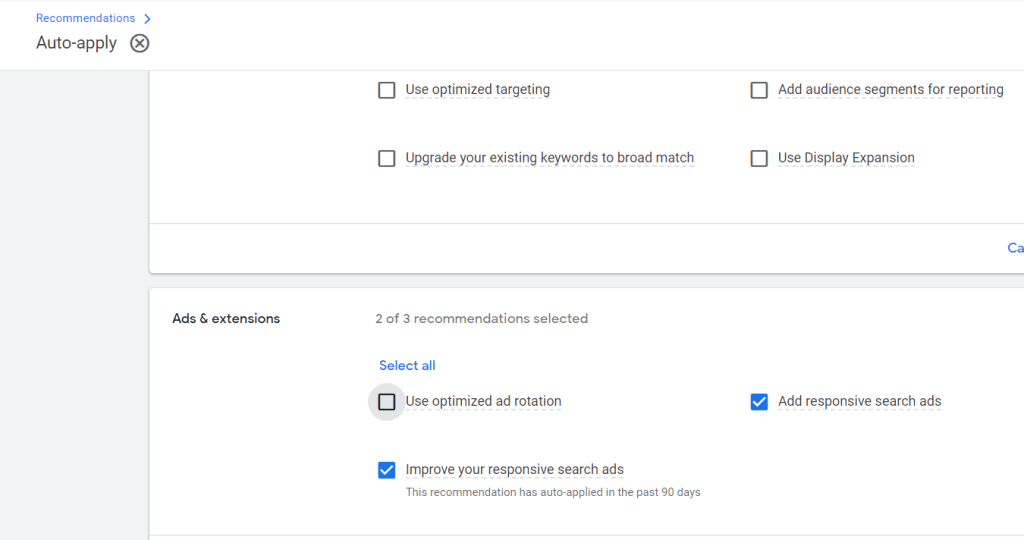If you’ve been living under a rock in the world of PPC marketing, you might not have heard that expanded text ads (ETAs) are retiring on June 30, 2022, meaning advertisers will no longer be able to create or edit them in Google Ads.
Responsive search ads (RSAs) will be the default ad type that advertisers can create and edit in Google Ads.
Augurian has been preparing since Google’s announcement in August 2021 to make sure all active ad groups in our client accounts have active RSAs so we’re not negatively impacted by the shift. We’ve reached 100% adoption of RSAs in all active ad groups, but we’re still seeing new clients not set up to best practice.
If you haven’t come up with a plan of attack and are not sure how to approach this in the long-term, this blog will 1) provide tips on how to make sure you’re approaching the shift from ETAs to RSAs strategically 2) provide some recommendations for ongoing search ad maintenance post-shift.
5 Steps To Stay Ahead of the Expanded Text Ads Sunset
- Keep ETAs active when they’re outperforming RSAs
- Audit RSA gaps in active ad groups and review currently active RSA headlines and descriptions for gaps
- Pull top-performing ETA headlines and descriptions into the RSAs that have gaps to boost ad strength
- Enable auto-applied recommendations related to RSA improvement
- Periodically review your ads and test advanced features
1. Keep ETAs active when they’re outperforming RSAs
After the sunset, ETAs will continue to serve and advertisers will still be able to see performance on them. In many cases, we’ve found RSAs significantly outperform ETAs, especially when testing with broad match keywords and smart bidding. However, we let ads performance dictate resourcing so if an ETA is performing best, we will keep it live in conjunction with an RSA.
For example, YTD we’ve found ETAs continue to outperform RSAs in terms of lead volume and cost per lead, like in the screenshot below.
This is likely due to the nature of the ads’ purpose being different. ETAs are more catered to a more controlled keyword set, like exact and phrase match keywords, which in the context of B2B tend to perform better because searches on converting terms tend to be much lower volume.
Whereas, RSAs are more geared toward expanding reach into auctions that we wouldn’t be able to cover normally with the more controlled approach. Therefore, RSAs are serving a completely different purpose than ETAs, especially in the B2B space, which is why we want to cover both efficiently converting ads on our core keywords and prospecting with the more edge query-focused RSAs, in this case.
2. Audit RSA gaps in active ad groups and review currently active RSA headlines and descriptions for gaps
Even advertisers that have made concerted efforts toward improving the RSA coverage in their Google Ads accounts, we’ve found there’s usually room for improvement in terms of 1) making sure all active ad groups have RSAs 2) making sure that active RSAs have at least 10-15 headlines and 4 descriptions.
We’ve been using a simple QUERY function to identify headline and description gaps in RSAs. In addition, we use an IF function and PIVOT table to quantify which ad groups need RSAs added.
3. Pull top-performing ETA headlines and descriptions into the RSAs that have gaps to boost ad strength
Once you have a grasp of where the RSA gaps are, I recommend pulling the top-performing ETAs’ headlines and descriptions into your new RSAs. Since we’ll no longer be able to add or edit existing ETAs after the sunset, this will help your RSAs’ performance by pulling from what already works.
I recommend pulling from top-performing headline and description variants from your RSAs, which can be found under asset details where Google provides ad strength for each ad input.
We’ve created a process that does this at scale across the entire account, using frequency scoring to uncover top-performing variants that should be replicated at scale.
4. Enable auto-applied recommendations related to RSA improvement
Our agency isn’t blindly adding auto-applied recommendations without strategically considering its impact on the account. We’ve found auto-applied recommendations are good for general account upkeep, but advertisers will be needed to set the right parameters and opt-in to the recommendations that meet their account’s goals.
A couple of auto-applied options to consider for ongoing optimization include the 1) “Improve your responsive search ads” and 2) “Add responsive search ads” recommendations. Both are checkboxed in the screenshot below, which advertisers can access from the Recommendations tab in Google Ads.
We’ve more heavily adopted the “Improve your responsive search ads” auto-applied recommendation because we know the variants that are added tend to boost ad strength and are pieces of headline and description copy pulled directly from the client’s website.
The “Add responsive search ads” recommendation has been adopted on more of a case by case basis. It’s a nice feature because it adds new RSAs in ad groups with no active RSAs. However, if a client has a sensitive brand topic or strict brand guidelines, Google’s algorithm still isn’t good enough currently. In those cases, we opt out of this recommendation.
That being said, as Google’s algorithm improves, we expect to adopt this feature across more accounts. It doesn’t hurt to test now and monitor because automation is the way of the future.
5. Periodically review your ads and test advanced features
With broad match keywords and RSAs, it’s nearly impossible to have an ad strength of excellent across all active ads and a quality score greater than 7. In addition, 15% of Google searches are new every day so the steps above are not a set it and forget it approach, but rather the start to an iterative process that never ends.
If you’ve taken all of the steps above, I highly recommend looking into advanced search advertising features, like countdown, keyword, or location insertion, which allow advertisers to dynamically serve headlines that are more relevant and drive greater urgency to potential customers.
What does the ETA sunset mean for the future?
Expanded Text Ads were introduced in 2016 and are being deprecated 6 years later, due to their more talented sister: Responsive Search Ads, which were introduced in 2018 to create more relevant ads in a dynamically changing search results page. That’s a quick transformation from introduction to mainstream!
How I feel about this and other Google Ads changes:
Taking a bird’s eye view, we’re testing other new features, like Performance Max campaigns and auto-applied recommendations, because with the rapidly changing technology, we anticipate more of what we do to get automated.
Considering the nature of Performance Max campaigns, our primary lever is creative optimization, so we’re continuously testing different structures and messages within our asset groups based on our ETA and RSA winners because, if I were a betting man, Performance Max is likely going to be the future of Google Ads.
Want to Know More About Digital Marketing?
If you’re interested in learning more about paid search advertising, as a beginner or a pro, find more tips and insights on our paid media blog. Level Up Your PPC Potency With These Expert Marketing Guides:
A Quick Guide to Google Ads Conversion Tracking
Google Ads Bid Strategy Types Explained
Beginner’s Guide to Negative Keywords for Google Ads
The Best PPC Networks to Test this Year
SaaS PPC Advertising Tactics Explained
Top 10 Google Ads Banner Sizes
Augurian is a digital marketing agency in Minneapolis, MN, with expertise in sophisticated digital marketing strategy. Our PPC experts can help you understand where the opportunity is strongest for your business and develop a lean paid media advertising strategy to capture it.
Find out how we drive success for our partners with paid media services.
- Paid Media Marketing During a Recession - September 1, 2022
- The Google Ads ETA Sunset is Coming in July – Get Your Accounts Ready - June 2, 2022
- The Top 6 B2B Paid Media Channels to Test in 2022 - April 5, 2022









